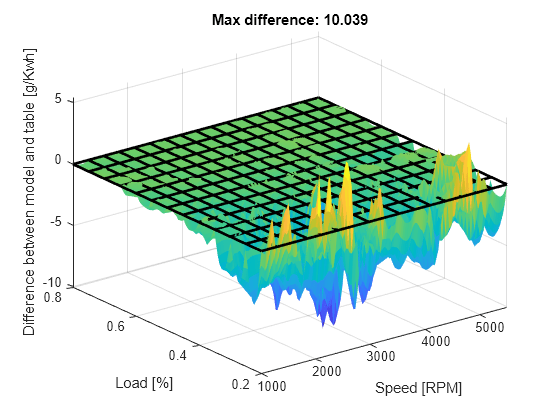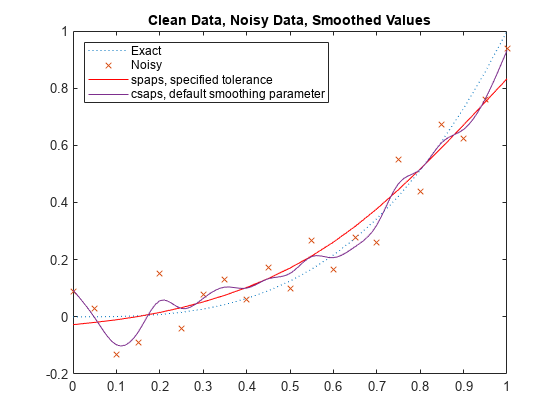平滑
平滑是一种减少数据集中噪声的方法。Curve Fitting Toolbox™ 允许您使用移动平均值、萨维茨基-戈雷滤波器和 Lowess 模型等方法或通过拟合平滑样条来对数据进行平滑处理。
使用曲线拟合器或在命令行中使用 smooth 函数以交互方式对数据进行平滑处理。有关如何对数据进行平滑处理的示例,请参阅Fit Smooth Surfaces to Investigate Fuel Efficiency。
App
| 曲线拟合器 | 对数据进行曲线和曲面拟合 |
函数
datastats | 数据统计 |
excludedata | Exclude data from fit |
fit | 对数据进行曲线或曲面拟合 |
fittype | 曲线和曲面拟合的拟合类型 |
fitoptions | 创建或修改拟合选项对象 |
get | Get fit options structure property names and values |
set | Assign values in fit options structure |
smooth | 平滑响应数据 |
prepareCurveData | 为曲线拟合准备数据输入 |
prepareSurfaceData | 为曲面拟合准备数据输入 |
主题
- Smoothing Splines
Fit smoothing splines in the Curve Fitter app or with the
fitfunction to create a smooth curve through data and specify the smoothness. - Lowess 平滑
在曲线拟合器中或使用 Lowess 模型通过
fit函数对您的数据进行平滑曲面拟合。 - Filtering and Smoothing Data
Use the
smoothfunction to smooth response data, using methods for moving average, Savitzky-Golay filters, and local regression with and without weights and robustness (lowess,loess,rlowessandrloess). - Fit Smooth Surfaces to Investigate Fuel Efficiency
This example shows how to use Curve Fitting Toolbox™ to fit a response surface to some automotive data to investigate fuel efficiency.
- 非参数化拟合
执行非参数化拟合,以使用插值和平滑样条创建经过数据的平滑曲线或曲面。

